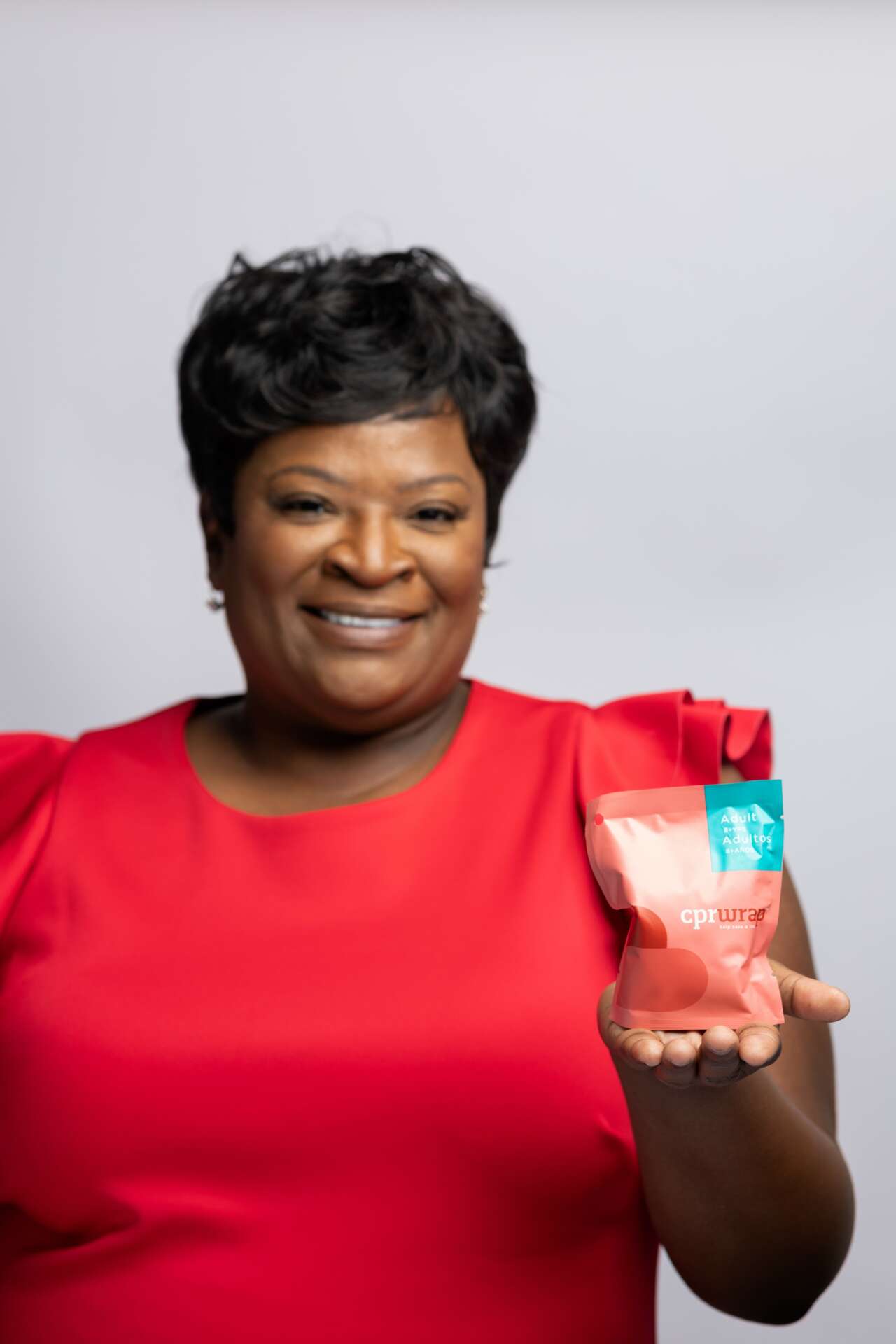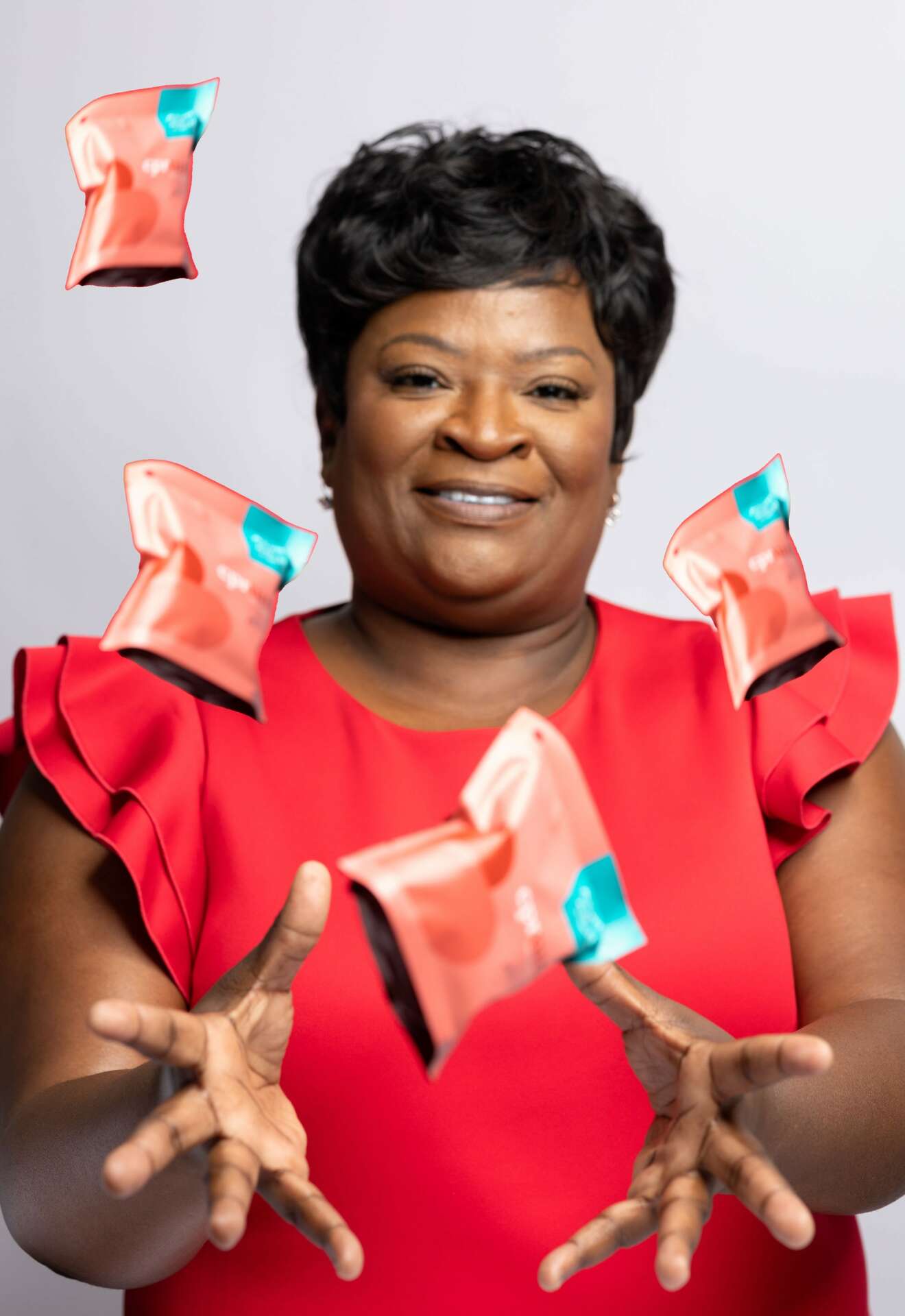We caught up with the brilliant and insightful Felicia Jackson a few weeks ago and have shared our conversation below.
Felicia, appreciate you joining us today. It’s always helpful to hear about times when someone’s had to take a risk – how did they think through the decision, why did they take the risk, and what ended up happening. We’d love to hear about a risk you’ve taken.
In the quiet corners of my mind, a spark ignited—an idea that had the potential to redefine life-saving practices. CPRWrap, my brainchild, wasn’t just an innovation; it was a vision to transform emergency response and empower individuals to be heroes in critical moments.
The turning point arrived when I faced a critical decision: to license my groundbreaking CPRWrap Resuscitation Kits or take the audacious leap of faith and build a business around it. The choice was clear, but the path ahead was veiled in uncertainty.
As a full-time Physical Therapist Assistant at the hospital, the prospect of transitioning into a full-time entrepreneur seemed daunting. The internal debate persisted for a month. Then, with conviction, I decided—I would be all in. I resigned from my stable job, fully aware that this endeavor demanded my undivided attention.
Yet, my biggest fear wasn’t the risk of failure; it was the fear of revealing this seismic shift to my husband. I took a leap, not just in entrepreneurship but in trust and transparency within my marriage. The revelation, though met with initial frustration, unfolded into a profound understanding of my determination and commitment.
The journey, however, was far from a fairy tale. Devoid of a clear roadmap, capital, or investors, I faced the stark reality of financial turmoil. The repercussions of my impulsive decision to quit my job reverberated through our personal and professional lives. We lost our car, teetered on the brink of losing our home, and grappled with mounting bills.
In the depths of despair, a lifeline emerged. A group expressed interest in CPRWrap, offering a potential lifeline—an investment of $1.2 million. The catch? They sought an 80% stake, relegating me to a role as an employee within my own creation. The decision weighed heavy on my shoulders, the lure of financial stability clashing with the essence of my entrepreneurial dream.
In a pivotal moment, I excused myself, seeking counsel from two trusted mentors. Their words resonated—the value of my dream surpassed the immediate financial gain. CPRWrap wasn’t just a business; it was a mission to make a difference in emergency response globally.
Returning to the negotiation table, I declined the lucrative offer. That day became both the worst and best of my life—a test of resilience and a reaffirmation of purpose. It was a day when I chose not just financial success but the integrity of my vision, my family, and the profound impact CPRWrap could have on countless lives.
As the journey continued, challenges persisted, but so did the unwavering belief that the path less traveled was the only path worth taking. Through perseverance and a commitment to the core values of CPRWrap, the storm began to clear, revealing the potential for not just personal success but a transformative impact on the world of emergency response.

Felicia, before we move on to more of these sorts of questions, can you take some time to bring our readers up to speed on you and what you do?
My journey into the world of life-saving innovations began with a moment that no parent should ever have to face—a choking incident involving my own son.
In the panic of that critical moment, I found myself struggling to recall the steps of CPR. That terrifying experience became the catalyst for what would later evolve into CPRWrap—a solution designed to empower anyone, regardless of their CPR training, to act confidently in an emergency.
Driven by the desperate need for a tool that could guide individuals through the steps of CPR without the fear of forgetting the steps or performing CPR incorrectly. I knew I had to not only create something for my family but for the world and CPRWrap, a simple and intuitive product, was born out of that determination to transform a traumatic experience into an opportunity for change.
CPRWrap is more than just a product; it’s a lifeline. It’s an all-in-one, single-use template with simple, step-by-step instructions printed on top of the template. The visual cues guide the rescuer through the critical motions of CPR—proper hand placement, compression depth, and breaths. Its simplicity is its strength, making it accessible to everyone, from trained professionals to those who may have never learned CPR.
Millions of people find themselves in situations where the knowledge of CPR fades in moments of crisis. CPRWrap is the answer to this universal problem. CPRWrap bridges the gap for those who can’t recall the steps, providing confidence and direction precisely when it’s needed most
CPRWrap stands out in its simplicity and effectiveness. It doesn’t just tell you what to do; it shows you. The visual cues eliminate uncertainty, empowering users to act decisively. It’s a game-changer for parents, caregivers, and bystanders, ensuring that the critical steps of CPR are accessible to everyone.
The thing I am most proud of is the fact that a product born out of desperation and necessity has become a lifesaver. CPRWrap has been responsible for saving two lives, and that’s more than a business success—it’s a testament to the real-world impact of innovation.
We often hear about learning lessons – but just as important is unlearning lessons. Have you ever had to unlearn a lesson?
Embarking on my entrepreneurial journey, I faced the daunting challenge of securing investors for my medical product, CPRWrap. The concept was embraced, my passion evident, yet attracting financial support proved elusive. Frustration settled in, and out of sheer desperation, I made a fateful decision: I accepted an investor partnership without due diligence.
In a whirlwind meeting, we shook hands and signed papers. Little did I realize that I was not entering a partnership but rather a takeover. This investor perceived me as a novice entrepreneur, dismissing my extensive 20-year experience in the medical arena. The partnership felt suffocating, and as the years passed, my company stood on the brink of collapse.
Facing the very real possibility of losing what I had built, I grappled with the temptation to quit. However, quitting was never in my entrepreneurial DNA. Instead, I dug in, worked tirelessly, and against the odds, found an investor who saw beyond the misconceptions and believed in both me and CPRWrap.
The hard-earned lesson was clear: not all money is good money. Quick solutions can lead to long-term complications. Partnerships, much like marriages, demand careful consideration and compatibility. My experience taught me that compromise and meeting each other halfway are essential for a partnership to thrive.
Through the challenging process of buying back my equity share from the initial investor, I discovered the profound importance of strategic partnerships. These are not just about funding but about aligning values, visions, and a shared commitment to growth. The journey is tricky, but the rewards are immense when you find partners who contribute not just financially but also bring expertise, networks, and a genuine belief in the potential of your venture.
Today, as I reflect on this transformative experience, I am grateful for the resilience that pushed me through the darkest times. The unlearned lesson about accepting quick money has become a cornerstone of my entrepreneurial philosophy. It’s not just about surviving; it’s about thriving through strategic partnerships that fuel both the company’s growth and my journey as a leader.
I hope aspiring entrepreneurs understand the importance of patience, discernment, and the enduring power of perseverance in the unpredictable landscape of business.
Can you tell us about what’s worked well for you in terms of growing your clientele?
When I started CPRWrap, I believed in the potency of my product and the genuine story behind its creation. Yet, I soon learned that having a great product and a compelling story was not enough for customers to naturally find their way to us. The adage “If you build it, they will come” did not hold true, especially for a product dealing with life-and-death situations.
CPRWrap is not a typical consumer product; it’s not clothing, jewelry, or food. It’s a tool designed for critical moments, and people, by nature, tend to be reactive rather than proactive in these situations. Realizing this, I shifted my strategy to be customer-centric, recognizing that CPRWrap is not just a product but a lifeline for those who have faced or fear sudden cardiac arrest, drownings, or other emergencies.
Understanding the emotional connection people have with such traumatic experiences, I decided to build my brand around relatability and empathy. Most potential customers had either personally experienced loss or knew someone who had. It was a tough decision to re-live the day I almost lost my child, but I knew that sharing this vulnerable story would resonate with those who wanted to prevent such tragedies.
I put my theory to the test on two powerful social media platforms: TikTok and Instagram. Armed with just my phone and a CPRWrap Kit draped over my shoulder, I stood before the camera and recounted the harrowing experience that birthed this lifesaving innovation. The video was unscripted, raw, and authentic, showcasing the human side of the brand.
The response was overwhelming. Within minutes, the video went viral, reaching over 11 million views in just a few days. More significantly, it translated into tangible results—over 30,000 CPRWrap Kits sold in less than two weeks. This wasn’t just a marketing success; it was a testament to the transformative power of relatable storytelling.
That moment, captured on video, changed the trajectory of CPRWrap. It wasn’t just about the product; it was about the mission and the shared human experience. People connected not just with the innovation but with the vulnerability, the pain, and the hope that fueled CPRWrap’s creation.
Today, as we continue to experience exponential growth, the lesson is clear: Authenticity and relatability are the cornerstones of building a brand that transcends the transactional and becomes a movement. CPRWrap is not just a tool; it’s a narrative, a lifeline, and a promise that resonates with the hearts of those who understand the value of being prepared when it matters most.
Contact Info:
- Website: https://cprwrap.com/
- Instagram: https://www.instagram.com/cprwrap/
- Facebook: https://www.facebook.com/CPRWrap/
- Linkedin: https://www.linkedin.com/in/felicia-jackson-42b29a59/
- Twitter: https://twitter.com/cprwrap
- Other: https://www.tiktok.com/@cprwrap
Image Credits
headshot: Chris Shaw MUA: Briana Brown


